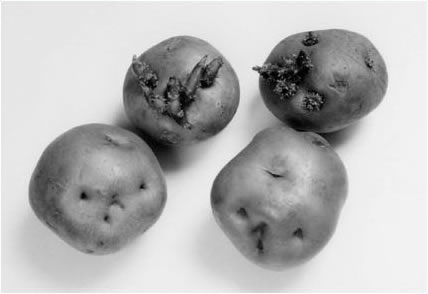 Apart from medical applications, how is radiation used in everyday life? Apart from medical applications, how is radiation used in everyday life?
 Radiation is employed in a surprising number of non-medical applications in everyday life. Radiation is employed in a surprising number of non-medical applications in everyday life.
Industrial applications
These days, almost all electrical devices make use of radiation in some way.
Household appliances have countless numbers of leads and cords, all of which are sheathed in plastic insulation to prevent short-circuits. While most plastics can only withstand temperatures of around 100° C, irradiation can increase the thermal resistance to around 300° C. This technique is used in household appliance production plants. Irradiation of impurities in glass changes the color of the glass; for instance, glass containing sodium turns brown when exposed to radiation, while glass containing cobalt turns purple. This technique is employed for esthetic effect in processed glass products.
The Glass Vase

Takasaki Radiation Chemistry Research Establishment, Japan Atomic Energy Research Institute |
The round magnetic disc inside floppy discs used to store computer data, are irradiated to improve the adhesion of the iron particles for better quality and longer life.Needless to say, the irradiation employed on these products has no effect on the body.
Food products
Recent examples include irradiation of freshly harvested potatoes to prevent sprouts forming, since the toxins present in new sprouts can cause stomach problems. Irradiation of potatoes was introduced in Japan in 1972.
Irradiated potato (bottom) and non-irradiated potato (top)

Photo provided by the Shihorocho Agricultural Cooperative Isotope Irradiation Center |
Inside a food irradiation facility in Japan

Photo provided by the Shihorocho Agricultural Cooperative Isotope Irradiation Center |
References:
See the Japan Atomic Energy Research Institute website at http://www.jaeri.go.jp
Cheked by Kuniaki Hayashi M.D. Professor Nagasaki University Graduate School of Biomedical Sciences
Cheked by Yutaka Okumura Professor Nagasaki Atomic Bomb Disease Institute Nagasaki University Graduate School of Biomedical Sciences
Written by Noboru Takamura M.D.,PhD. Department of Public Health Nagasaki University Graduate School of Biomedical Sciences
|

